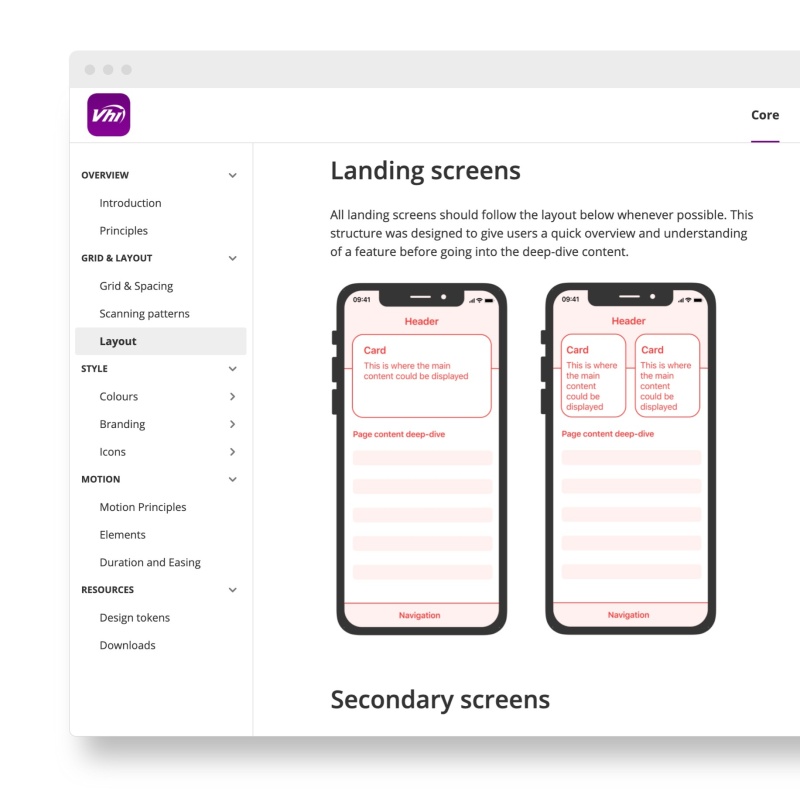
Subscription UX: best practices for vitamin and supplement brands

05 October 21
- Inspiration
- Customer Experience
The subscription market has boomed in recent years, growing more than 435% over the last 9 years according to subscription management platform provider, Zuora. There’s no sign of this growth slowing down either, with 70% of businesses believing that membership and subscription models hold the key to future commercial growth and expansion (Manifest Growth Architects).
In the world of health and wellness, new products with subscription services are launching each week, delivering everything from vitamins and health food products to diet supplements and allergen testing kits straight to the doors of consumers.
For brands looking to build a successful subscription-based model within the health and wellness space, the traditional ‘pounds for points’ model isn’t enough to build long-term engagement with customers.
Here, we look at some of the top UX considerations for businesses that want to succeed within the vitamin subscription area specifically.
An opportunity for vitamins and supplement brands
At a recent networking event, we spoke with a Head of Digital at one of the UK’s most well-established vitamin and supplement brands about a problem they’d noticed within their sector. Wholesalers — such as Holland & Barrett and Amazon — had managed to successfully create a subscription model off the back of their products through offering things like a one-click option to upgrade their single order to a repeat one, and small percentage discounts on subscription prices.
Whilst smaller wellness businesses would never be able to compete with wholesalers and online marketplace giants in areas such as price and platform familiarity, we believed there was an opportunity for brands to engage with their customers on an emotional and personal level. This would allow them to own the customer experience and build the foundations for creating an ongoing direct-to-consumer subscription model.
The traditional subscription model approach
Within a traditional subscription model, brands would often seek to embrace methods such as financial incentives, rewards, and elements of gamification in order to harbour loyalty. The more you spend and engage with a brand, the more you are rewarded with points, discounts and exclusive offers. With models such as Spotify or other streaming services, the subscription model offers users an enhanced service — namely, the removal of ads.
Opportunities for personalisation are generally limited, often coming in the form of choosing between a limited selection of different subscription packages, perhaps varying in frequency, volume, or product type.
With a subscription to something like vitamins or other health supplements, these traditional approaches aren’t enough. Health is a highly personal issue where a one-size-fits-all approach doesn’t work and traditional features lack the impact needed to form a long-term relationship.
An overreliance on the traditional type of reward and incentive-based subscription model runs the risk of creating a transactional relationship with the customer, and inevitably leads to a ‘race to the bottom’ amongst competitors.
In order to build repeat customer engagement with their product, health and wellness brands should seek to create an emotional attachment for their consumers. But, how can supplement brands seek to do this?
Our approach
Personalise the experience with a simple diagnostics tool
Through introducing a simple diagnostics tool at the beginning of the e-commerce interaction, the consumer is immediately aware that they are involved in an individual and tailored process right from the outset. The only way to create a truly personalised experience is to engage with the customer by asking questions — who are they? What is their lifestyle like? What are their health concerns?
Simplicity is key when it comes to the build of this tool. Questions should be kept to no more than 4 or 5 to limit the amount of variables and the time needed for the customer to work through them.
The questions themselves should be Yes / No or multiple choice, to allow for an outcome based on best practices and recommendations for the consumer demographic, rather than detailed medical advice. For example, a young woman who lives an active lifestyle and eats a vegan diet may be recommended a supplement high in Iron, B12 and Omega-3s.
Add value through additional content
Through the creation of relevant and personalised supplementary content, subscription wellness products can further add value to the experience of their customers. By utlising the wealth of data gathered from the previously mentioned diagnostics tool, internal marketing and content teams can create highly personalised content that is specifically tailored to the demographics, needs and health concerns of their customers.
This content may come in the form of articles, personal user success stories, influencer features and general interest lifestyle pieces which can be pushed out via the company website, app, social media channels and email marketing initiatives.
Providing this sort of additional content helps build an emotive relationship with the customer at various touch points and reinforce the key message — taking these supplements on a regular basis will ultimately improve my health.
Promote adherence with notifications and follow-ups
When it comes to the success of supplements and similar wellness products, the end goal is improved health for the customer. As health improvements are unlikely to be seen overnight, it’s essential that customers adhere to the recommended intakes over an extended period of time to notice the effects. Adherence is the key to the commercial success of the product, and the health benefits for the consumer.
Adherence can be promoted through a number of methods. The use of notifications and reminders — particularly when the customer orders and engages via an app, but also via channels such as email — can be a powerful tool when done right. Adherence is also encouraged with the use of carefully thought-out content that reinforces benefits and successful outcomes for others.
Ensure continued engagement through regular check-ins and updates
In order to ensure the longevity of the customers’ engagement with the supplement subscription model, the personalised interaction with the diagnostics tool at the beginning of the process should be replicated at regular intervals as the relationship matures.
The provider should check in with their customer regularly to find out if anything has changed in their life that may affect their product recommendations. A customer may have changed their diet or become pregnant, offering an opportunity for a newly tailored supplement package and further refinement of the additional content that is made available to them.
Wellness brands could also tailor their communications and interactions around external factors such as changes in seasons, or the global events such as the pandemic. This allows the relationship to evolve over time and keeps the offer highly relevant for the consumer and their current circumstances.
Who’s doing what now?
Personalisation is at the core of the digital experience for New York based wellness brand Care/of. Their quiz is the first thing visitors are presented with when landing on the website, and the rest of the pages are peppered with phrases such as “You do you”, “Let’s work together” and “You know your body, we know the science”.
Vitamin Buddy, encourages customers to take their free lifestyle quiz before selecting one of their flexible plans and receiving a tailored vitamin box straight to their doorstep.
They also have a wealth of supplementary content available for customers via their blog on topics specifically related to vitamins and minerals as well as more general interest lifestyle and wellness areas.
Goal-targeted vitamin supplements brand, Vitl, refer to their diagnostics tool a ‘Consultation’, rather than the term ‘Quiz’ used by multiple competitors. This helps convey trust and expertise.
Eco-friendly brand, Feel, adds value for their customers with a dedicated space on their site for scientific content, in addition to their lighter blog content. Users can view various stats, reports, and science-based resources to understand the ‘why’ behind their headline statements.
The future of supplement subscription models?
Over the last 12 months, we’ve seen the launch of products that take the notion of personalisation and individuality when it comes to health and wellness one step further — to the product itself.
Nourished have disrupted the vitamin and supplement market with the recent launch of their 3D gummy vitamins tailored specifically to the needs of their customers. After filling out an online introductory quiz, Nourished will post a month's supply of edible supplement stacks to support the immunity, gut health, and energy levels of the recipient.
Through personalising the product itself to this level, customers feel like they’re getting a product that is completely unique to them.
Take the next step
Thinking of launching a subscription-based health or wellness product and looking for suggestions for how you can enhance the digital experience for your customers?
Get in touch with us to find out more about how UX and UI Design, User Research, or an Innovation Workshop could help.

